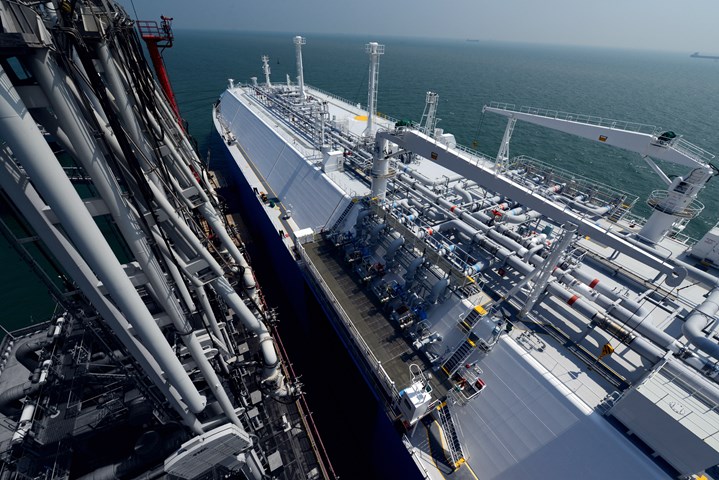Booming LNG industry’s energy transition challenges
Monetising resource, clean LNG and low-carbon diversification
1 minute read
Simon Flowers
Chairman, Chief Analyst and author of The Edge

Simon Flowers
Chairman, Chief Analyst and author of The Edge
Simon is our Chief Analyst; he provides thought leadership on the trends and innovations shaping the energy industry.
Latest articles by Simon
-
The Edge
Can emissions taxes decarbonise the LNG industry?
-
The Edge
Why the transition needs smart upstream taxes
-
The Edge
Can carbon offsets deliver for oil and gas companies?
-
Featured
Wood Mackenzie 2023 Research Excellence Awards
-
The Edge
Nuclear’s massive net zero growth opportunity
-
The Edge
Hydrogen: how carbon intensity rules can muddy the waters
The LNG market is on fire. Producers are in clover with soaring gas prices in Europe (US$18/MMBTU) and Asia (US$20/MMBTU), well above oil parity, delivering record earnings and cash flow. After plumbing the depths a year ago, the outlook for LNG has fundamentally improved with gas demand recovering strongly from the 2020 downturn and supply growth slowing. We believe robust prices and margins will prevail for several years.
The rosy outlook, though, masks the reality of profound uncertainty: the LNG industry is just starting to get to grips with the upheaval the energy transition presents. As the LNG world descends on Gastech 2021 this coming week, Massimo Di-Odoardo identifies the three key challenges the sector faces – and the opportunities that these bring.
How to monetise resource
An upcycle usually brings a flurry of FIDs but, so far, we’ve seen only two this year, both NOC-led. Qatar’s expansion at NFE and Russia’s Baltic LNG are both huge and low cost. The volumes mop up most of the contestable demand through to 2028, and both countries have more big projects planned.
IOCs have yet to come to the party. Gas and LNG are central to the energy transition strategies of many IOCs, including all the Majors, as well as specialist LNG players. But monetising resource is a challenge. Capital discipline still reigns, and high-cost, capital-intensive and long-payback projects are well down the pecking order for new investment. Uncertainty over longer term gas demand is another factor. Shell’s deadline of 2040 for any new integrated gas project to pay back is a sign of what’s to come. In a sector where conventional project paybacks typically are 10 to 15 years, 2040 isn’t that far away.
US LNG developers are about to take advantage. US projects have much shorter lead times and developers worked through the downturn to get costs down. Five years ago, US tolling costs were US$3.50/MMBtu; today some proposed projects are below US$2.00/MMBtu. US LNG can be delivered into Europe below US$7/MMBtu within three years.
Moreover, with LNG prices increasingly volatile, trading and portfolio optimisation are key drivers of value creation. US LNG offtake contracts, with no upstream capital commitment, are becoming even more attractive to the portfolios of the big LNG traders, including Shell.
Pressure to reduce costs is also being reflected in sector consolidation. Woodside/BHP Petroleum and Santos/Oil Search are all seasoned LNG players. These combinations will focus on improving the competitiveness of future supply from Australia and PNG and maximising the value of the existing resource and infrastructure.
We expect that sustained firm prices and the push on costs will lead to more FIDs led by IOCs or independent developers. Among these we expect backfill developments (including Australia and Trinidad) and US LNG projects.
The big question is whether there is sufficient confidence in the industry to commit to higher cost brownfield projects (potentially Canada and Mauritania), let alone giant greenfield projects like Mozambique.
Making LNG clean
Policymakers in Europe and Japan have reducing gas consumption firmly in their sights as they push to net zero. These are early signs that, ultimately, gas’ days are numbered, despite its relatively low-carbon intensity. Current high LNG prices might convince some end users to accelerate energy transition ambitions (renewables, for example) and contribute to the erosion of long-term gas demand.
There is a range of views on the timing of peak gas. Wood Mackenzie expects gas demand to be resilient through 2050 in our 2 °C and 1.5 °C scenarios, displacing coal in the power sector in developing economies; paired with CCS in power and industry; and with growth potential as feedstock for blue hydrogen. In contrast, the IEA Net Zero Emissions scenario is more pessimistic.
The industry needs to present a greener product if it is to secure a sustainable future and bolster longer term demand. It’s not enough merely to rubber-stamp LNG cargoes ‘green’ by buying cheap carbon offsets as is happening now.
Producers and traders have to go the whole hog. That means taking action to reduce Scope 1 and 2 emissions through the LNG value chain, from sourcing gas (including upstream flaring, venting and leakages); through liquefaction (fugitives, electrification of facilities, CCS); and shipping and regassification. Partnership on Scope 3 emissions to build CCUS systems has to be the end game.
Diversify and repurpose
Gas producers need to think about diversifying into low-carbon alternatives to natural gas. The markets for blue hydrogen and ammonia are embryonic but will play a key role in achieving net zero. ADNOC’s partnership with Japan (hydrogen and ammonia) and Russia’s with Saudi Arabia (hydrogen) are among those showing the way. The wider industry has a golden opportunity to leverage core skills and gas infrastructure to develop markets for these fuels.
Investment in new LNG assets will increasingly consider future alternative uses. Could infrastructure be repurposed for hydrogen or depleted reservoirs for CCS?

